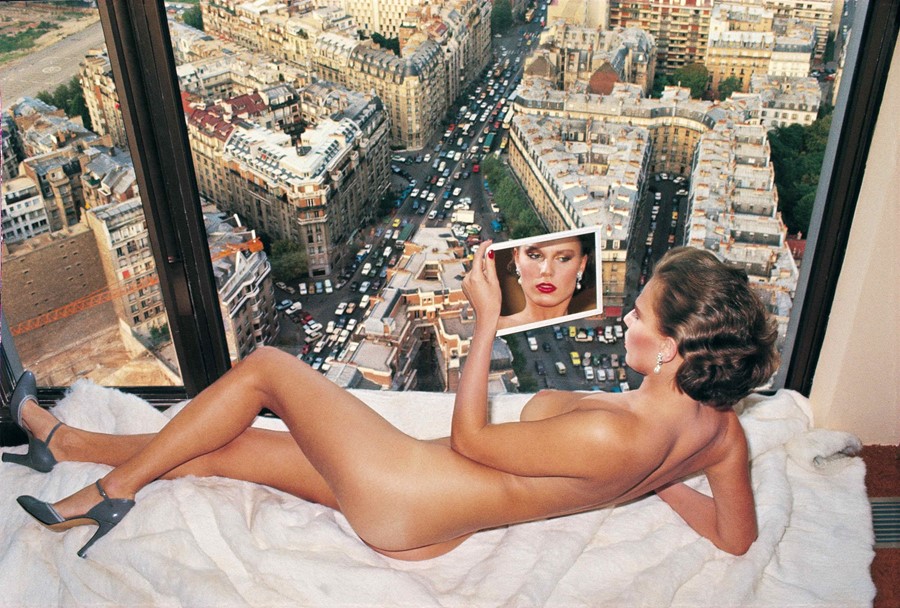Ahead of the photographer’s retrospective at Foam in Amsterdam, we give you an authoritative education on the ‘King of Kink’
Nobody has made quite the lasting impression on fashion imagery as Helmut Newton. Hired by French Vogue in the 1950s before being propelled to fame in the 1970s, Newton came to be renowned for his controversial scenarios, hypersexualised imagery and striking compositions. With elements of his work that linked to the themes of surrealism – an art movement dominant during his youth spent growing up in Berlin – Newton’s unadulterated love of beautiful and strong women saw him create images laden with heavy overtones of voyeurism, sadomasochism and fetishism.
With work published in Nova, Queen, Vogue, Vanity Fair, Elle and Playboy plus 64 covers for Vogue Paris under his belt, Newton’s famed oeuvre ranges from powerful nude women, who radiate a sense of eroticism and empowerment, to black-and-white portraiture of figures that range from Margaret Thatcher to David Bowie, Leonardo DiCaprio and Sophia Loren. With a new major exhibition Helmut Newton – A Retrospective set to run at Foam, Amsterdam, from June 17 to September 4, we give you an authoritative education on the prolific image maker.
A IS FOR “A GUN FOR HIRE”
To quote Newton referring to his own photographs, "Some people's photography is an art. Mine is not. If they happen to be exhibited in a gallery or a museum, that's fine. But that's not why I do them. I'm a gun for hire.” Despite the laundry list of museums and galleries that have featured his work, Newton refused to define his work as “art”. Chronicling his photography from 1962 right up until his last-ever editorials for Vogue, A Gun For Hire is quite literally a photobook of the work Newton created as a “gun for hire”.

B IS FOR BIG NUDES
Newton started a series of all black-and-white nudes in 1980 that came to define his woman: powerful, strong, assertive and entirely in control. Setting out to replicate the setup in a series of police photographs of members of the Baader-Meinhof terrorist group, Newton shot full-length photos of nude women instead of terrorists. Soon changing the title of the body of work from The Terrorists to The Big Nudes, it’s his photograph of Henriette Allais – “Big Nude III” – that became the hero image of the series.
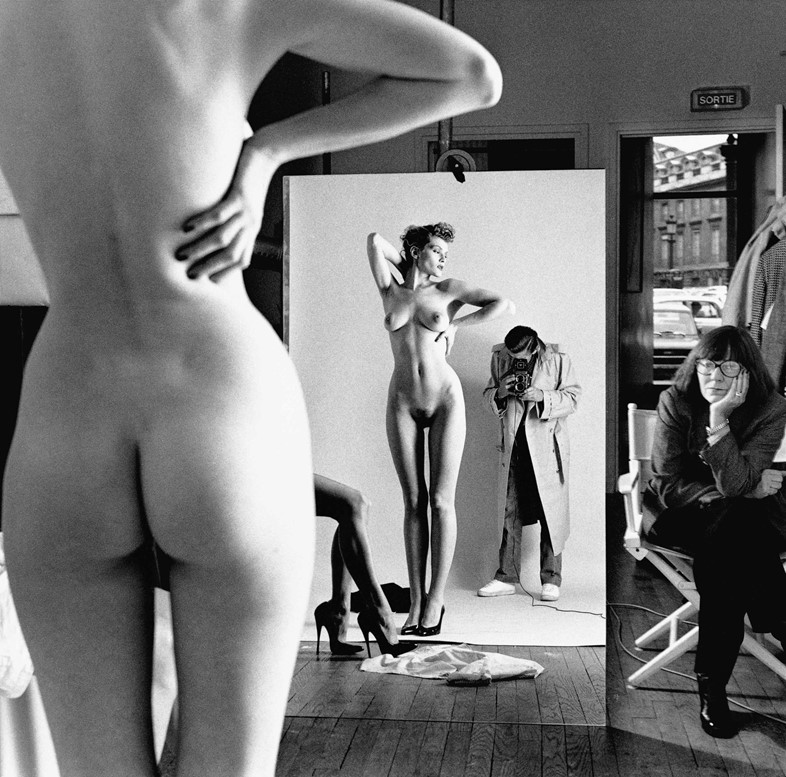
C IS FOR CHARLOTTE RAMPLING
It was on set at a Playboy shoot in 1973 that Newton met Charlotte Rampling, the actress and model that was soon to become his muse. Taking a portrait of her sat naked on a dining table in Arles, a glass of wine in hand, as Rampling explained to Harper's Bazaar, it was after the shoot that her and Newton got more familiar with each other. “Playboy was just a nice picture of me, naked from the back and sitting on a chair. Then Helmut said, 'Can we now do a nude – our nude?'” Rampling’s copy of the photograph sits in her garage.

D IS FOR DEATH
Like a narrative from one of his photographs, Newton came to his untimely death on January 23, 2004 after crashing his Cadillac just outside of famed Hollywood hotel, Chateau Marmont, while spending his winter in LA as he did every year. Dying at the age of 83, Newton left behind his then 55-year-old wife, June, best known as photographer Alice Springs. In the words of Karl Lagerfeld, “It was his last picture, taken by himself.”
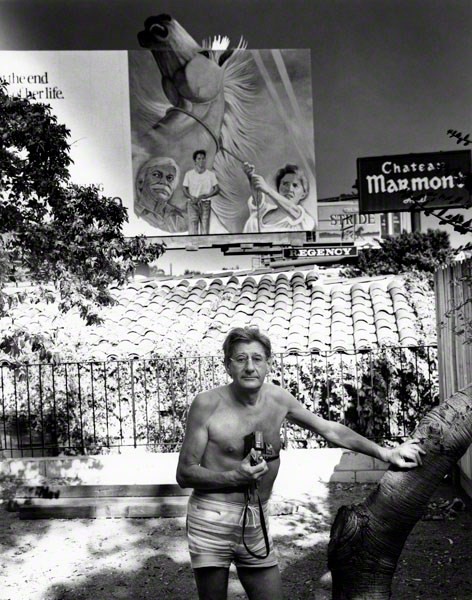
E IS FOR EXOTIC DANCER
Newton’s “Mata Hari” photo story for Vogue in 1963 caused a stir for its glamorous portrayal of a female spy. Inspired by Margaretha Geertruida ‘Margreet’ MacLeod, better known by the stage name Mata Hari, she was a Dutch Frisian exotic dancer who was convicted of being a spy before being executed by firing squad in World War I. Newton’s editorial sees a woman posing by the Berlin Wall, later being led away from a barbed wire fence by police.
F IS FOR FETISH
Newton is the force responsible for bringing the taboos of fetishism and sadomasochism into mainstream fashion photography and on to the pages of popular magazines. For Newton, fashion was a fetishistic pursuit. From “Swimwear”, an image of a young Jerry Hall spitting water over a topless model published by Vogue, to “Saddle I”, an image of a model bent over, kneeling provocatively on a bed at the Hotel Lancaster wearing a riding saddle that he shot for men’s magazine Adam, published by Vogue at the time, Newton was unafraid to shock.
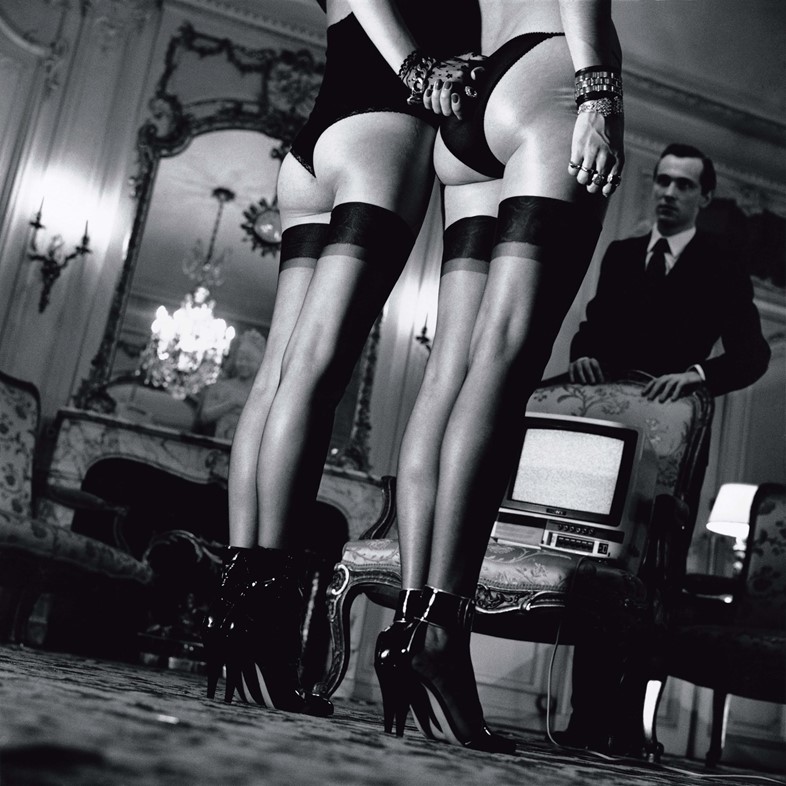
G IS FOR GENDER ROLES
Forever testing the limits of social acceptability, Newton’s camera provided a lens to explore power, sexuality and gender roles, the last of which he was always challenging. Using photography to turn traditional gender norms on their head, Newton’s women were strong, dominating, dangerous and sexually free, and their powerful poses were a testament to this. Newton’s statuesque and Amazonian women began to appear in French Vogue and other publications in the 1970s just as feminism was gaining momentum, causing uproar amongst the Women’s Movement.

H IS FOR HELMUT NEWTON FOUNDATION
Both a key location for the cult film Christiane F: Wir Kinder vom Bahnhof Zoo and the home of the Helmut Newton Foundation, the “Zoo” area of Berlin can be found in the Charlottenburg district. Housed in Landwehrkasino – a former Prussian military officer’s casino – the foundation protects and preserves the photographic oeuvre of Helmut and his wife June Newton. Also exhibiting personal ephemera – faxes, passports, props and clothing – the foundation itself was established by Newton in 2003 before opening shortly after his death in 2004. His main wish, that the foundation wouldn’t be a “dead museum” but rather a “living institution”.
I IS FOR ‘IRON LADY’
Within Newton’s portraiture sits a photograph of the ‘Iron Lady’, Margaret Thatcher. Commissioned by Vanity Fair in 1991, the photograph was taken in Anaheim, California. Refusing to pose without smiling in case she ran the risk of looking “disagreeable”, before giving in to the photographer’s charm, Thatcher had no qualms in telling Newton that she hated the portrait that now sits in London’s National Portrait Gallery.
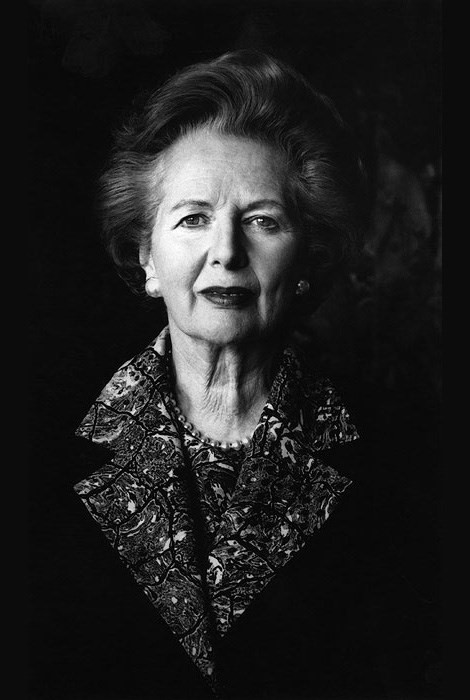
J IS FOR JUNE NEWTON
Written and directed by his wife of 56 years, Helmut by June takes a behind-the-scenes look at Newton’s work process as a photographer. Having bought Newton a video camera for Christmas one year that he failed to use, June began using the camera herself, putting Newton behind her lens. An intimate portrayal by the woman who knew him best, the 53-minute short also features Carla Bruni and Cindy Crawford, two of Newton’s long-time muses.
K IS FOR ‘THE KING OF KINK’
Following the publication of his erotic photo book, White Women in 1976, Time magazine crowned Newton with the title, ‘The King of Kink’. An apt epithet for a man who once said, “If a photographer says he is not a voyeur, he is an idiot,” no doubt.
L IS FOR LOS ANGELES
June 2013 saw Los Angeles’ first major exhibition of Newton’s photographs. Titled Helmut Newton: White Women, Sleepless Nights, Big Nudes, the exhibition took place at the Annenberg Space for Photography and displayed over 100 large-scale images from Newton’s first three books long with two films, the aforementioned Helmut by June and Provocateur. Created by Arclight Productions, Provocateur examines Newton’s legendary impact on fashion photography as told by the editors, photographers and women who were influenced by his vision.
M IS FOR MONTE CARLO
From the endless beach, swimming pool and boardwalk scenes that provided backdrops for his French Vogue editorials, right down to the peppermint and white striped sun loungers of Monte Carlo Beach Club that Newton is seen taking a siesta on while listening to his Walkman in Helmut by June, the warm climate of Monaco provided much inspiration for Newton, who moved to Monte Carlo after living in Paris for 26 years.
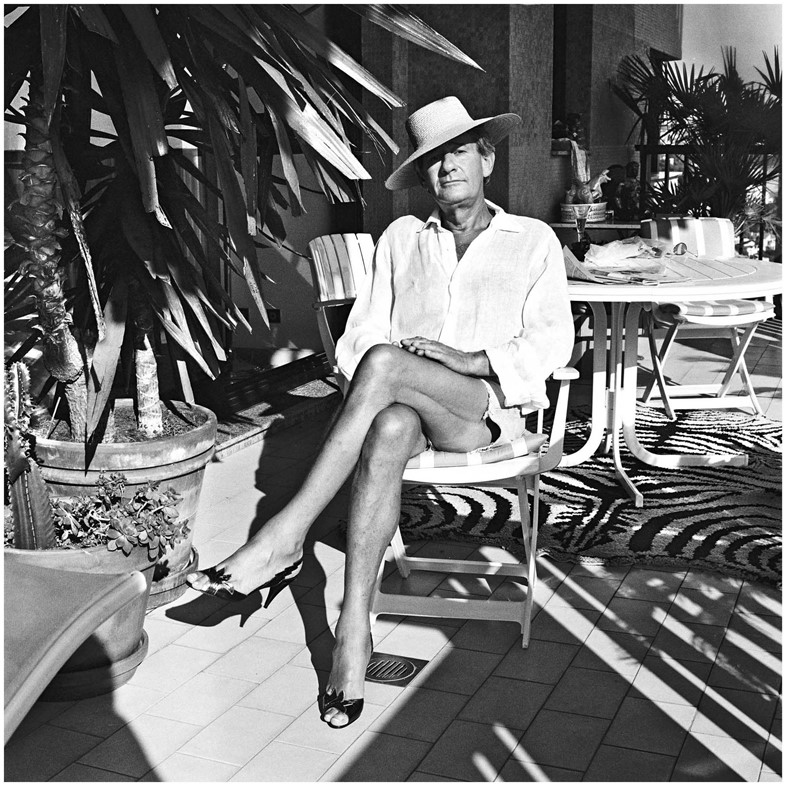
N IS FOR NOVA
Published between 1965 and 1975, Nova was a British anti-celebrity magazine founded by Harry Fieldhouse that set out to radicalise the women’s publishing market. Discussing sex, politics, the pill and other topical issues, with fashion photography contributions by Newton, Don McCullin and Terence Donovan, Nova’s content was risquee and ahead of the times. A magazine for intelligent women, Nova’s cover lines ranged from “The Gospel According to a Homosexual Priest” to “Muggeridge: Is He Britain’s Biggest Bore?”. A women’s magazine with more male readers than female, Nova ceased printing in 1975 due to its financial decline.
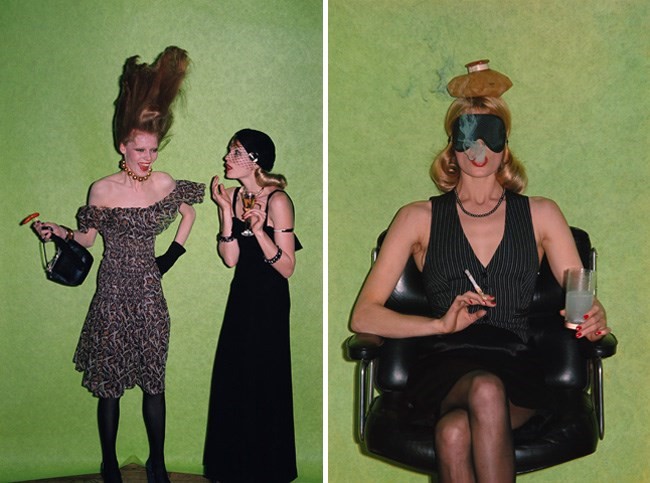
O IS FOR ORTHOPAEDIC BRACES
Unafraid to shock, Newton cast six-foot model Nadja Auermann for a fashion spread about stilettos Vogue’s February 1995 issue. Appearing with a surgically pinned leg, being pushed around in a wheelchair, the editorial also featured leg braces, crutches and other orthopaedic paraphernalia. Commissioned under the editorship of Anna Wintour, the editorial named “High and Mighty” was supposed to be empowering, but was widely viewed as offensive. Eight years later, Tom Ford’s AW03 collection for Yves Saint Laurent featured Lucite jewellery that was inspired by the exact same editorial.
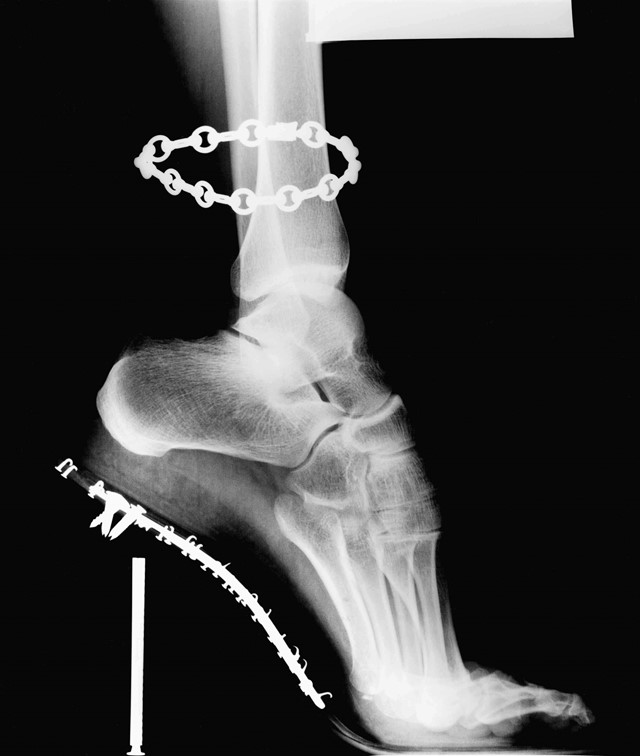
P IS FOR PORTRAITS
Of course, it wasn’t all fashion and beautiful nude women for Newton, he was also acclaimed for his portraiture that spanned the realms of fashion, film, politics and popular culture. Having once said that “portraits are an extraordinary seduction”, Newton photographed everyone from Sophia Loren, Leonardo DiCaprio and Angelina Jolie to Margaret Thatcher and Salvador Dalí, the last of which requested that Newton took his photograph shortly before his death.
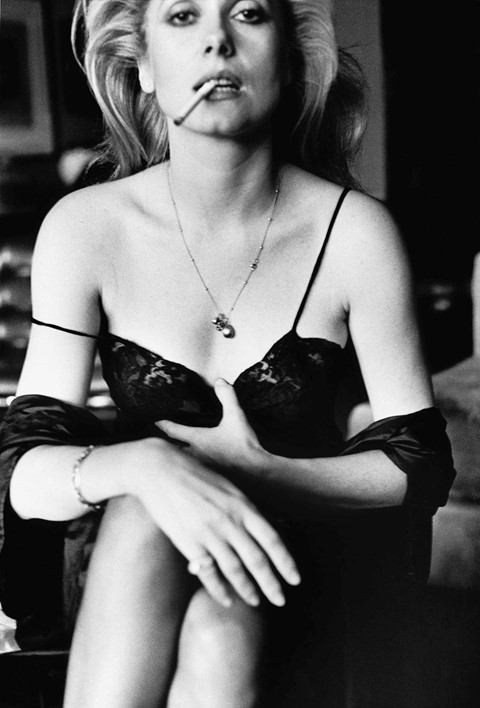
Q IS FOR QUESTIONING THE STATUS QUO
“I still believe that the perfect fashion photograph is a photograph that does not look like a fashion photograph. It’s a photograph that looks like something out of a movie, like a portrait, maybe a souvenir shot, maybe a paparazzi shot, anything but a fashion photograph.” For Newton, fashion meant more than just garments and models, it was a way to tell a story, a commentary on the times.

R IS FOR ROMANCE AND RELATIONSHIPS
As Newton once said to his wife, “Photography will always be my first love but you will be my second.” Despite putting his photography first, Newton’s portraits of June portray a heightened sense of passion, a different type of tenderness. But was she jealous of his relationships with the subjects of his photographs and the erotic fantasies they came to be symbolic of? As June told The Guardian in 2005, “No. Not at all. He always said, ‘You can fuck the models, or you can work with them, but not both at the same time.’”
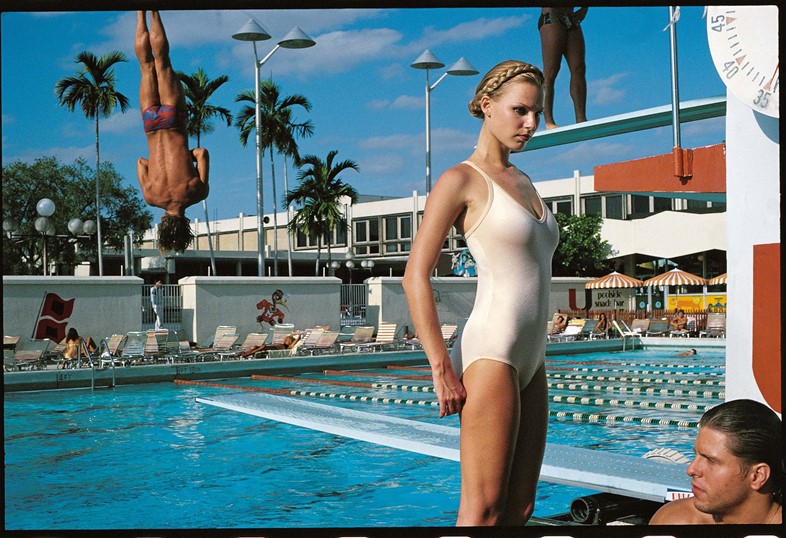
S IS FOR SUMO
With only 10,000 copies in existence, each signed and numbered by Newton himself with a book holder designed by French designer and architect Philippe Starck, Sumo is a titanic book in more ways than one. Edited by June, featuring more than 400 images – some of which were being published for the first time – Sumo weighs 35.4kg when boxed. A bold publishing venture, Sumo broke records for weight, dimensions and resale price alike.
T IS FOR THREE BOYS FROM PASADENA
Eight years after his death and 30 years after their time spent working together, three of Newton’s long-time assistants – photographers Mark Arbeit, George Holz and Just Loomis – reunited to pay tribute to their mentor. Mixing their memories of working with the profound photographer with archive footage, they created Three Boys from Pasadena: a Tribute to Helmut Newton, an intimate documentary that serves as a candid snapshot of Newton’s private life behind the scenes.
U IS FOR UNCOMPLICATED
Never once using a motor drive to take a photograph, Newton was always in full control of his work. First picking up a camera at the age of 12 – an inexpensive box camera made by Eastman Kodak called the Kodak Brownie – as Newton explained, his equipment barely ever got more advanced than that. “I think things are complicated enough without making them more so, I think this is why my technical equipment is very simple, very basic because it gives me more time to work with the girl which is the most important thing.”
V IS FOR DOMESTIC NUDE V
Shot in 1993 in Newton’s usual Hollywood haunt, the Chateau Marmont, “Domestic Nude V, in my living room” is a black-and-white portrait of an unknown woman, nude save for a pair of black heels and rouge-slicked lips. The fifth photograph in a series of ten – of which the original is on auction at Christie’s with a guide price of $30-40,000 – the Domestic Nude series saw Newton place strong naked women in a series of domiciliary scenarios: squatting provocatively in a wooden dog kennel, spread-legged, propped up against the fridge and collecting logs in the back yard.
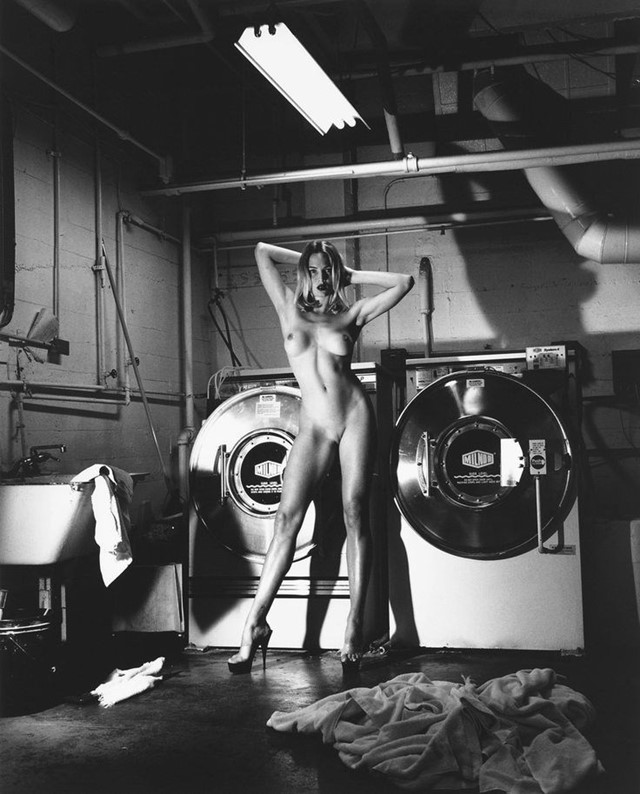
W IS FOR WHITE WOMEN
Published in 1976, White Women was Newton’s first book release. Demonstrating his penchant for technical perfection and establishing his soon-to-be world-renowned aesthetic, the visually erotic book is still as controversial as it was 40 years ago today, and is widely regarded as Newton’s best book, despite the number of publications that followed.
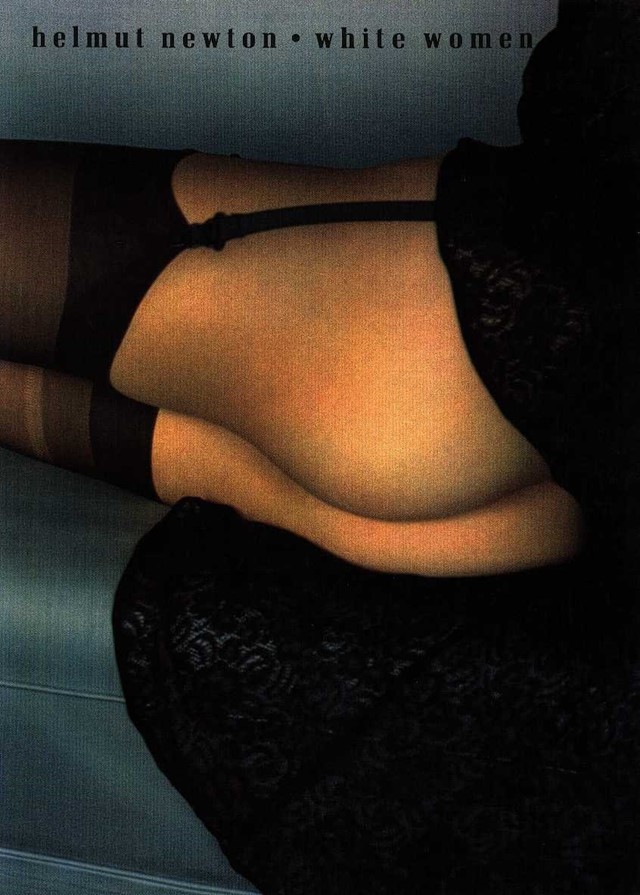
X IS FOR X-RATED
Newton’s carefully composed, almost cinematic shoots provided the perfect counterpoint to Playboy’s infamous playmate nudes. That’s not to say they weren’t X-rated. Ranging from his aforementioned shoot with Charlotte Rampling, to the image of a girl in the shower with her legs spread wide and the water supply shooting at her G-spot shot in 1977, Newton’s work for Playboy was driven by the idea of powerful women playing out X-rated, erotic fantasies.
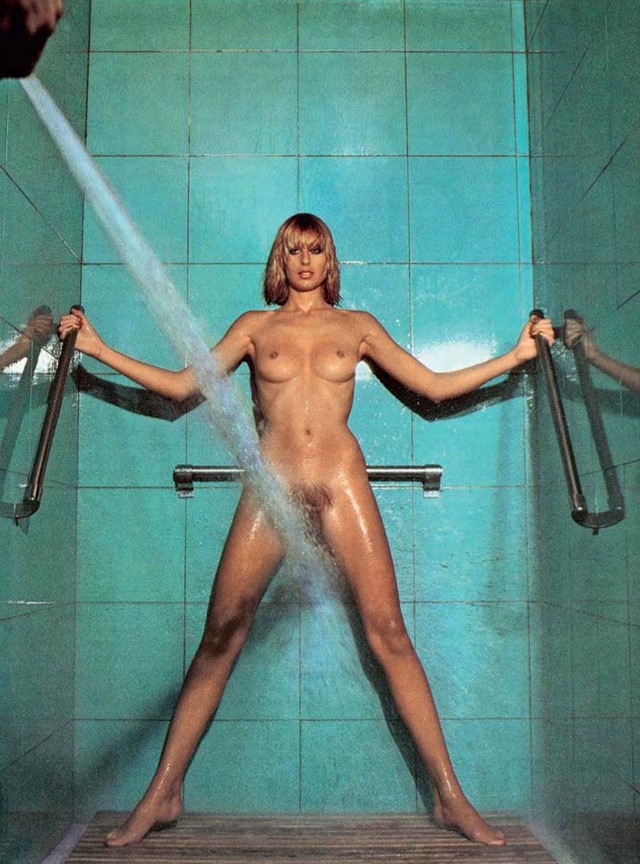
Y IS FOR YVES SAINT LAURENT
First shown as part of his 1966 Pop-Art collection, Yves Saint Laurent’s Le Smoking Jacket came to symbolise an alternative kind of sexuality. Fronting a newfound femininity that didn’t require exposed flesh and restrictive cuts, Le Smoking came to be iconic and Newton was undoubtedly part responsible. Shooting the tuxedo on an androgynous woman with slicked-back hair, standing in a dimly-lit Parisian alleyway, together Newton and Saint Laurent created a moment in fashion history.
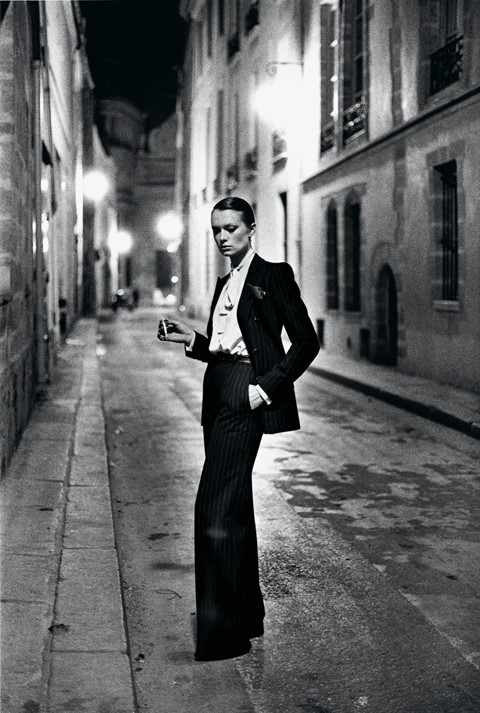
Z IS FOR ZEITGEIST
Newton was widely regarded as creating the zeitgeist for an era of female emancipation. Together with Yves Saint Laurent and Karl Lagerfeld, Newton was leading a new wave of photographer and designers who set out to shake up gender norms and preconceived perceptions of femininity. Whether his women wore menswear, womenswear or were stark naked, they were always dominant, in control and most certainly set free from the social restrictions of the time.
Helmut Newton – A Retrospective will run at Foam from June 17 to September 4 2016
